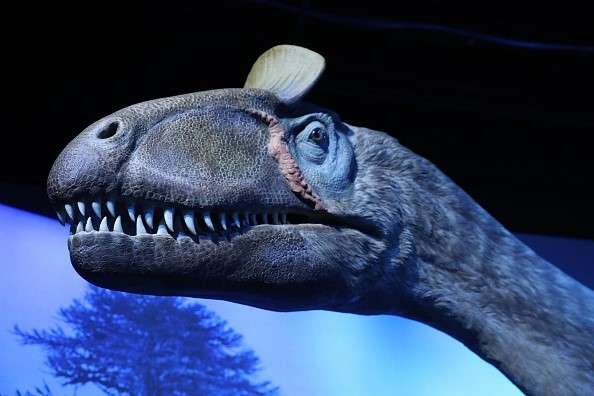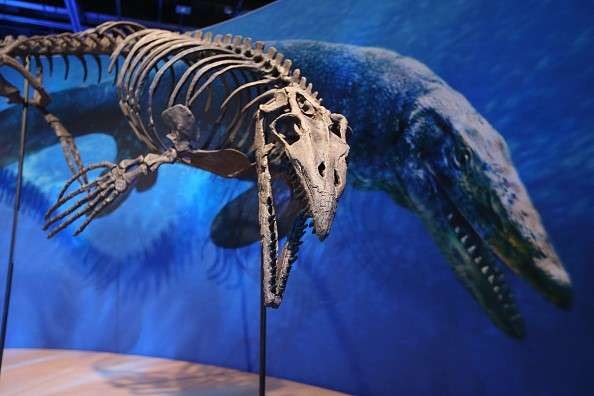Create a free profile to get unlimited access to exclusive videos, sweepstakes, and more!
Dinosaurs used to chill out in the last place reptiles were ever expected to live or breed - the Arctic

The last places you’d expect to find enormous reptiles like dinosaurs wandering around are the glacial extremes of the planet, but there were species that did.
Fossils of some highly unlikely dinosaurs have already shown up in Antarctica (above and below). Now researchers have unearthed Cretaceous dino fossils in the northernmost region with evidence of dinosaur habitation — and it goes beyond that. Bone fragments from hatchlings could be evidence that what is now northern Alaska was once a dinosaur nesting site, which goes against the assumption that these reptiles could not have been able to survive the punishing cold.
These are not the first dinosaurs that hung out in the Arctic, but they lived further up than anything found there before. They also appear to have been permanent residents. Paleontologist Patrick Druckenmiller, who recently led a study published in Current Biology, became more and more convinced of this as he examined the fossils of fetal and baby dinosaurs that proved breeding was definitely happening in a place that was supposed to be forbidding to cold-blooded creatures.
"They were there because they could be there," he told SYFY WIRE. "Dinosaurs lived there because they either had or evolved the physical and physiological capacity to be there. There was probably lots of vegetation and 24-hour sunlight during the summer months, but the price to pay was winter with snow and freezing conditions."
70 million years ago, the region of Alaska that became its Prince Creek formation was warmer than it is today, but still no haven for reptiles. There were four months of winter darkness, and average annual temperature was around 40 degrees Fahrenheit. Such conditions could easily freeze an exothermic creature that relies on weather to keep it warm enough to stay alive (think of iguanas basking in the sun). This is why there is speculation that these species could have been endothermic, producing their own body heat like birds and mammals. There wasn’t much to absorb elsewhere with the lack of sunlight.
Reptile eggs also need heat to hatch, which only further supports the thinking that these dinosaurs might have been endotherms. Any exotherm unable to take in much heat itself would have little to transfer to its eggs while sitting on them. For the dinosaurs that did not sit on their eggs, leaving them exposed to frigid air would have probably been lethal without some heat source. Of the 13 species of dinosaur in the formation, seven of those were confirmed to have been reproducing. Evidence for dinosaurs breeding that far north is rare, but scientists may have just not searched in the right places yet. It wasn’t too long ago that this discovery would have had heads shaking in disbelief.
It is also because of their hatchlings that Druckenmiller believes the dinosaurs had to have lived there. Migration would have been a high risk, and it is highly unlikely baby dinosaurs that just broke out of the egg would be able to travel thousands of miles south. There were some, such as certain hadrosaur species, whose incubation periods were too long for them to make it out even if their young were able to make the journey. Winter would have been looming by the time they left.
"After hatching, probably late summer, there was little time before the onset of harsh winter conditions, probably by October," he said.
Dinosaurs that lived in the Prince Creek Formation ranged from small to large, theropods to sauropods. Hadrosaurs, ceratopsians and tyrannosaurs are just a few types that emerged during the excavation. The absence of any other cold-blooded creature besides a dinosaur adds to this argument. If the only other animals that lived this far north were warm-blooded, then dinosaurs there must have also been endothermic.
There is an alternative hypothesis explaining why dinosaurs would reproduce in such an inhospitable place. It is possible they migrated there during the warmer months to breed, then headed south when temperatures plummeted again. Druckenmiller and his research team used the data they collected to test both the endothermic and migratory hypotheses. While both large and small species were capable of migrating thousands of miles, they believe that the hatchling fossils are strong enough evidence for a nesting ground that dinosaurs lived in throughout the year, even during long stretches of darkness.
"Dinosaurs are a huge group," he said. "They probably had a wide variety of physiologies we call endothermy, ranging from something close to birds to partial endothermy. You can't live in the conditions that existed in the arctic without some degree of endothermy."
Extant reptiles are distant descendents of dinosaurs, and those that are partially endothermic thought to have evolved endothermy on thier own.
Could the dinosaurs of Alaska have been feathered? There is no evidence or this yet, but it is possible, since feathers can trap heat. Maybe evidence for that is still waiting to be found.















